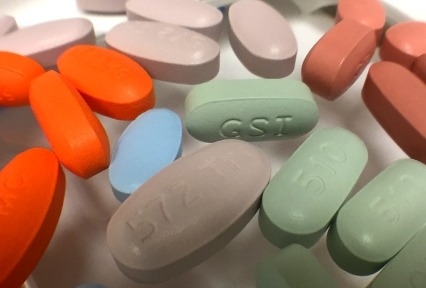When taken daily, PrEP (pre-exposure prophylaxis medication), is proven to prevent HIV transmission from injection drug use or sex. Although rates of HIV among people who inject drugs have dropped since the early 1990s, recent outbreaks have been reported around the country. Women have been disproportionately represented in these outbreaks, and more information is needed about how to increase their access to these potentially life-saving medications.

A new NIDA-funded study suggests that implementing PrEP distribution within a community-based syringe services program gets the much-needed medication into the hands of women who inject drugs. Syringe service programs have become an integral part of evidence-based harm reduction strategies, providing access to (and disposal of) sterile syringes and injection equipment, and providing much-needed linkages to helpful social services.
In the first demonstration project among women who inject drugs, known as “Project Sexual Health Equity (Project SHE),” the scientific team prescribed up to 24 weeks of daily PrEP to 95 adult cisgender women — those whose gender identity matches their sex assigned at birth. The study was based at the largest syringe services program in the mid-Atlantic — Prevention Point Philadelphia— located in the Kensington neighborhood, a center of the city’s opioid crisis.
Participants completed clinical assessments and surveys at three different timepoints; weeks 1, 12, and 24. To reflect real world health care, the women were required to use their own insurance to pay for PrEP. While about 63% identified as currently homeless with an annual income less than $4,999, nearly all (90.5%) were insured at enrollment and the rest were helped to sign up for insurance.
While only slightly over half of participants reported being aware of PrEP prior to the demonstration, most women (77.5%) went on to accept PrEP at their first return visit. While many participants did not consistently achieve prevention effective adherence levels (6 of 7 doses/weekly), this pilot project demonstrated that integrating syringe services with access to PrEP increased access to these important medicines.
The authors note that future studies should include more women of color, however the study showed how synergy can be achieved by cross-agency collaboration, especially important in the time of COVID-19. Now there is strong evidence that there is a demand for PrEP among women who inject drugs when clinical care is provided in tandem with syringe services programs, which has the potential to save lives in this population.
Study:
- Alexis M. Roth, Nguyen K. Tran, Marisa A. Felsher, Annette B. Gadegbeku, Brogan Piecara, Rachel Fox, Douglas S. Krakower, Scarlett L. Bellamy, K. Rivet Amico, Jose A Benitez, Barbara Van Der Pol. Integrating HIV pre-exposure prophylaxis with community-based syringe services for women who inject drugs. Results from the Project SHE demonstration study. Journal of Acquired Immune Deficiency Syndromes.
